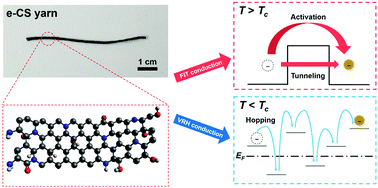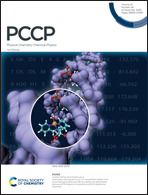Charge transport in pyroprotein-based electronic yarns†
Abstract
Pyroprotein-based carbon materials produced by heat-treating silk proteins have many potential applications in electronic devices, such as electronic textiles. To further develop potential electronic devices using these pyroproteins, the charge transport mechanism has to be verified. However, the electrical characteristics of the pyroproteins have not been reported yet. In this study, the temperature-dependent charge transport behavior of pyroprotein-based electronic yarns prepared from commercial silks (e-CS yarns) is investigated with respect to various heat treatment temperatures (HTT, 800, 1000, 1200, and 1400 °C). The linear current–voltage properties are shown at a low bias of 100 nA from 9 K to 300 K. The temperature-dependent resistivity of the e-CS yarns can be clearly described by the crossover of 3-dimensional Mott variable range hopping and fluctuation-induced tunneling conduction at the crossover temperature (Tc). These Tc factors are significantly different, due to the structural modulation of the e-CS yarns depending on the HTT, and are characterized by Raman spectroscopy, X-ray diffraction, and transmission electron microscopy. This study is expected to provide a better understanding of the electrical properties of pyroproteins.



 Please wait while we load your content...
Please wait while we load your content...